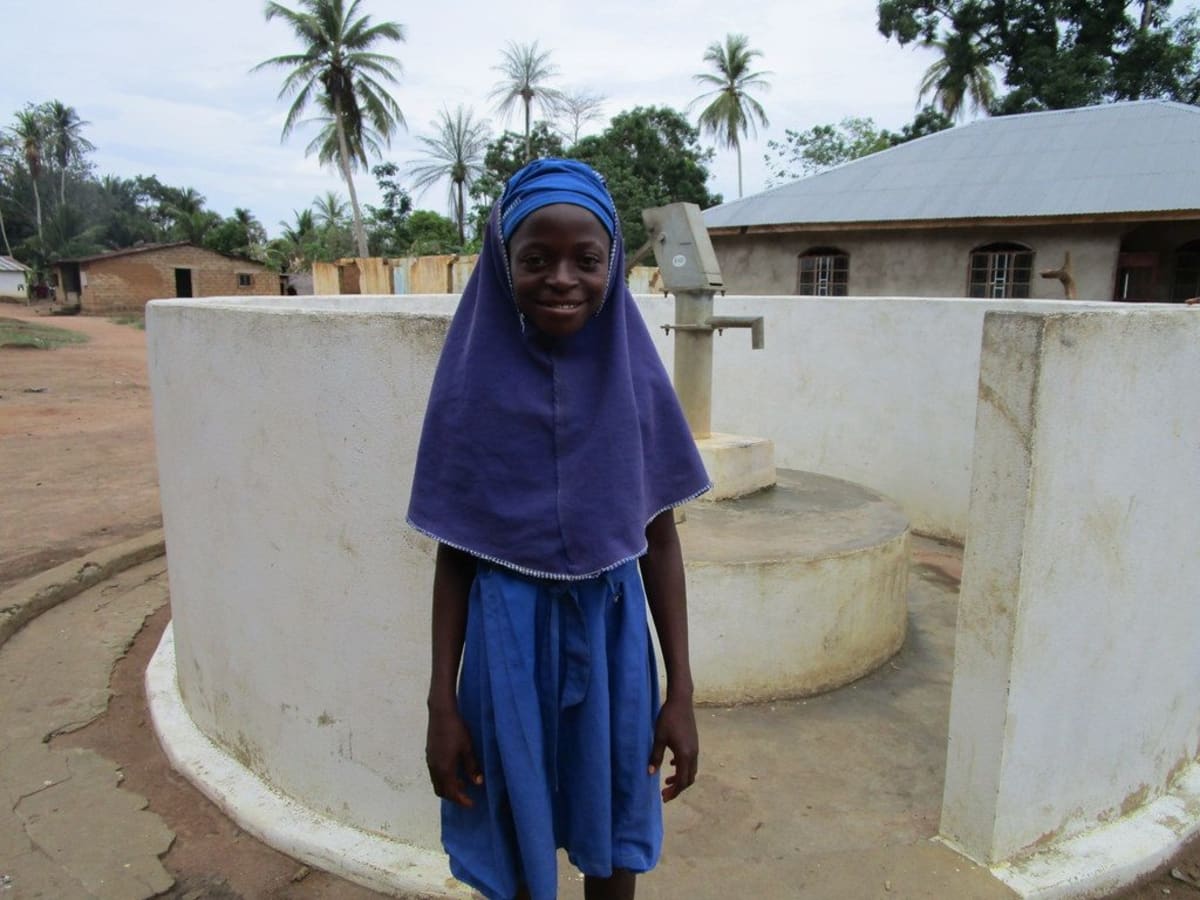This project is a part of our shared program with Mariatu’s Hope of Sierra Leone. Our team is pleased to directly share the below report (edited for clarity, as needed).
Welcome to the Community
Pa. Burreh Tholley was the first person to ever settle in this area, way back in 1892. He originally came from Gbinty Kamaraka, and chose to settle by the river since his occupation was fishing and farming. Others joined him in farming and fishing as the years passed.
The community built up to its total of 77 houses. The name Kafunka came about through the activities of the early settlers, who were both farmers and fishermen. When they harvest good yield from their farms, they store it in elevated rooms which they call "funk." Out of these they got the name Kafunka, because they produce large amounts of rice.
A day starts early in the morning. Most here go to the mosque for prayer. After that, they prepare to go to their farms with their wife and children. They stay there until evening; some even eat dinner at the farm. When they finally return home, adults sit together and discuss community or family matters while children play. At around 6:30PM they start preparing for their final prayers after which they immediately retire to bed to get enough rest for the next full day of work.
Water Situation
There is a hand-dug well that we have been monitoring on a quarterly basis. As the years passed, we got more and more phone calls from the community. In fact, many of the locals even came to our office in person to describe how the pump wasn't working. These calls were during the dry season, and a visit from our mechanic confirmed that this well is being negatively impacted by the lack of rain.
As the water levels drop, the community must pump harder and longer to get what they need. At certain times, they can’t get any water at all. The situation is especially bad in April, May, June, and July.
As the water levels get worse, people here have no choice but to return to dangerous, dirty water sources.
Sanitation Situation
A little over half of households in Kafunka have their own pit latrine. But either way, the latrines we observed are in very poor condition. Because of this, locals prefer to seek the privacy of bushes to relieve themselves. When it rains or wild animals wander, this waste is spread and puts everyone at risk.
There are no hand-washing stations here, proving that little time or effort is spent for hygiene and sanitation.
Plans: Hygiene and Sanitation Training
There will be hygiene and sanitation training sessions offered for three days in a row.
No hand-washing stations were observed here. After our visit, the hygiene and sanitation trainer decided it would be best to teach community members how to build a tippy tap (a hand-washing station built with a jerrycan, string, and sticks). They will use these tippy taps for hand-washing demonstrations, and will also teach about other tools like dish racks and the importance of properly penning in animals.
These trainings will also strengthen the water user committee that manages and maintains this well. They enforce proper behavior and report to us whenever they need our help solving a serious problem, like a pump breakdown.
Plans: Well Rehabilitation
The well marked for this overhaul is dry for half of every year and needs major work to supply adequate, clean water to the community year round. The pump will be removed, and a man will be lowered inside with a hand auger. This hand auger will allow the team to drill several meters deeper to hit a sufficient water column that will ensure the well supplies water throughout the drier seasons. As the team drills, casing will be installed, transforming this hand-dug well into a pseudo-borehole. PVC piping will connect this lower system directly to the pump, a construction that we know will also improve the quality of water.
Once this plan is implemented, everyone within the community will have access to safe drinking water in both quality and quantity, even through the dry months.

 Protected Dug Well
Protected Dug Well

































